
After an extended run of better-than-expected earnings seasons, Q3 US results have proved somewhat disappointing.
Third quarter earnings growth looks set to come in at just over 2%, representing the weakest quarterly growth rate for 2 years.
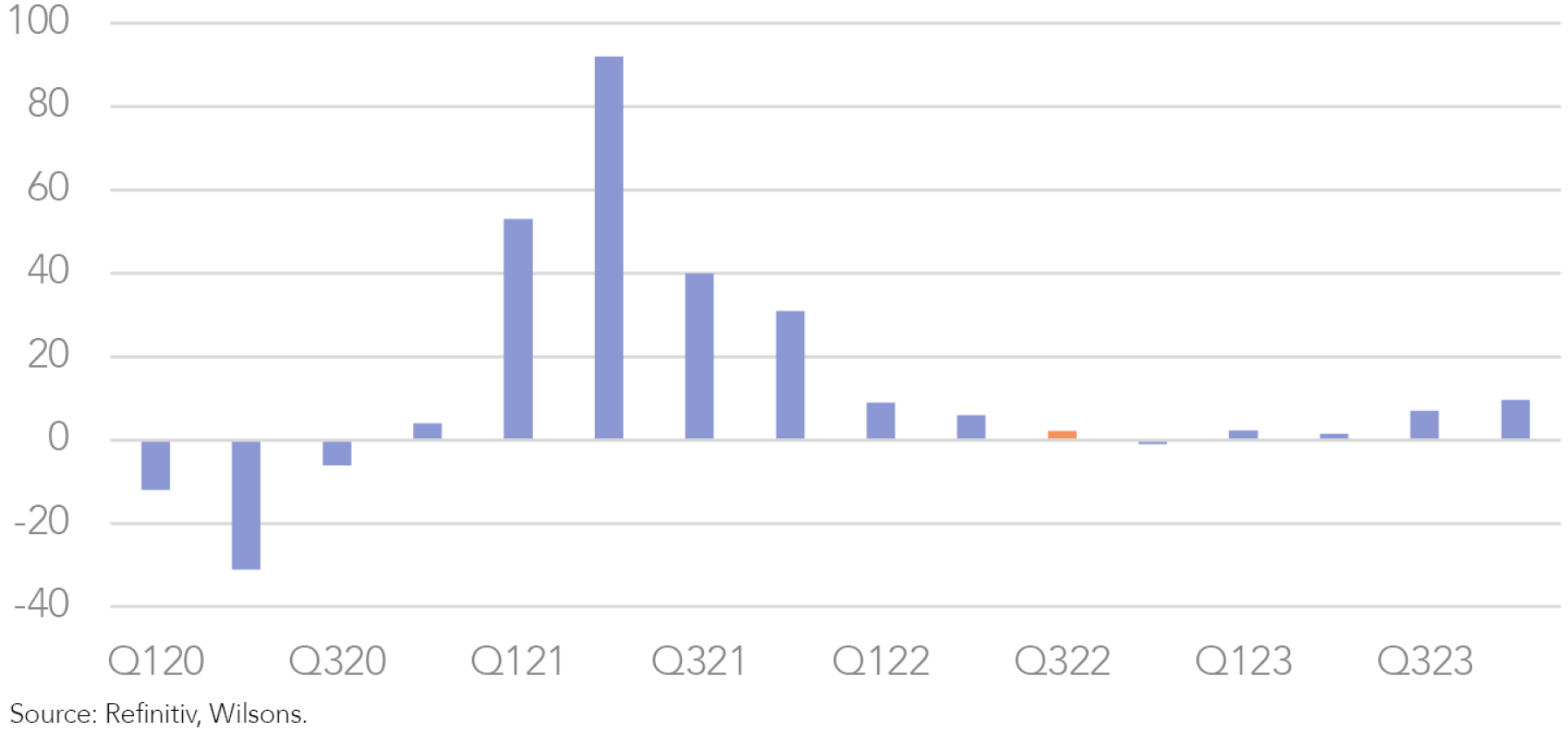
Although aggregate revenue growth remained quite strong at 10%, earnings margins are now easing back from recent all-time peaks.
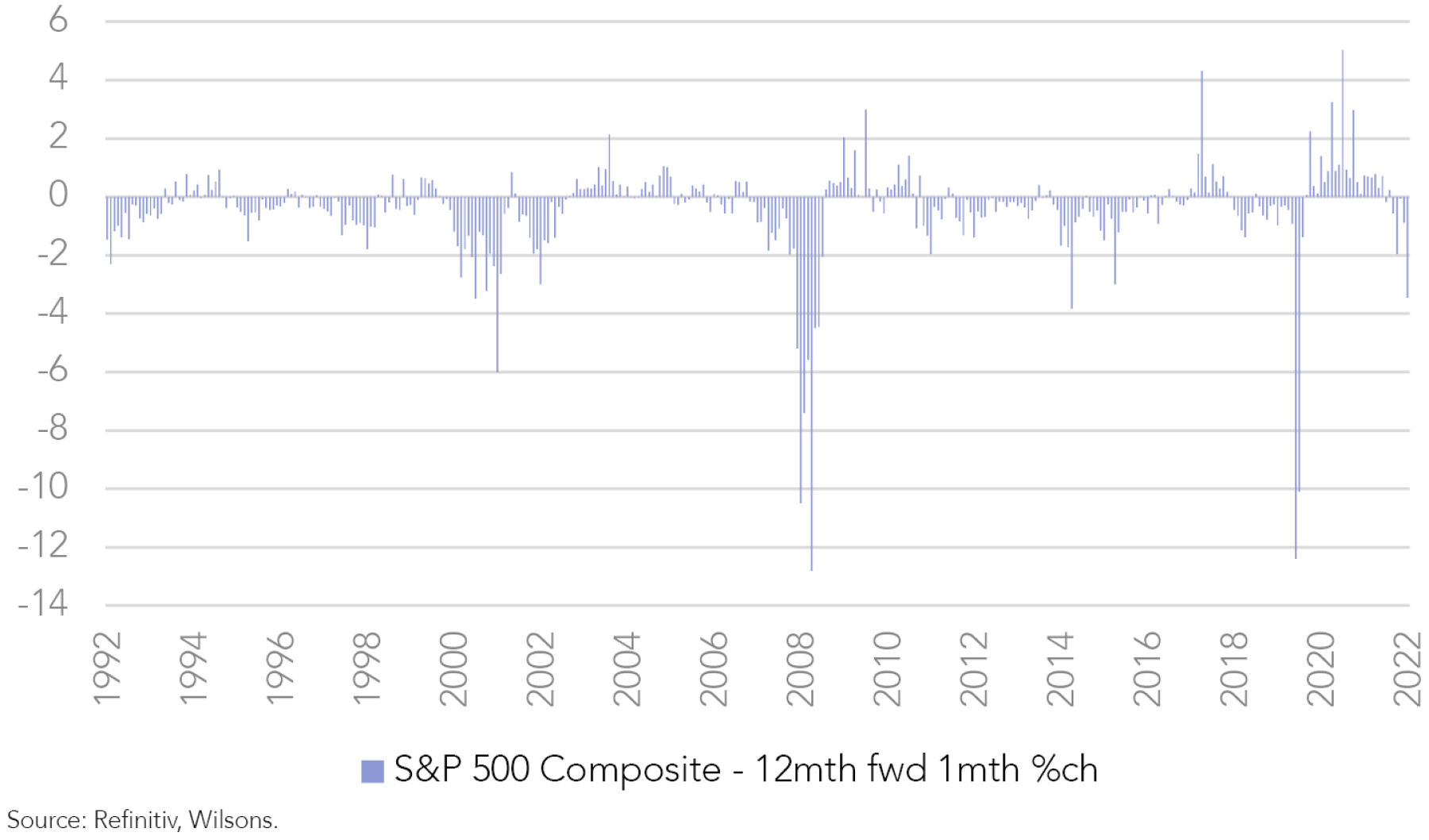
Earnings expectations have been sombre for a while now. After a record 22 months of upgrades, forward estimates are currently in their 5th month of downgrades.
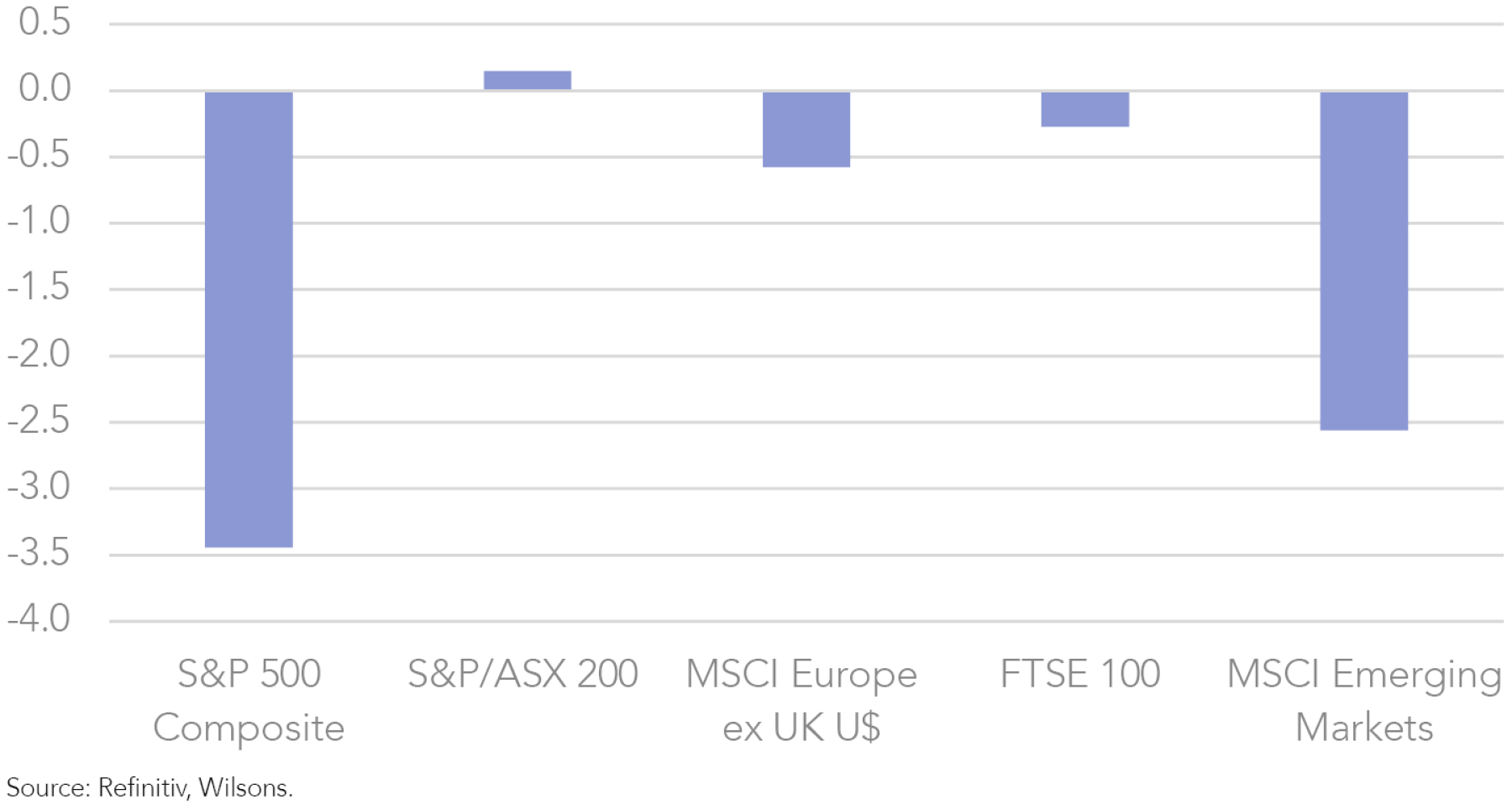
In fact, the US market is now displaying weaker consensus earnings revision momentum than Europe (which we think is likely mostly a function of relative currency moves).
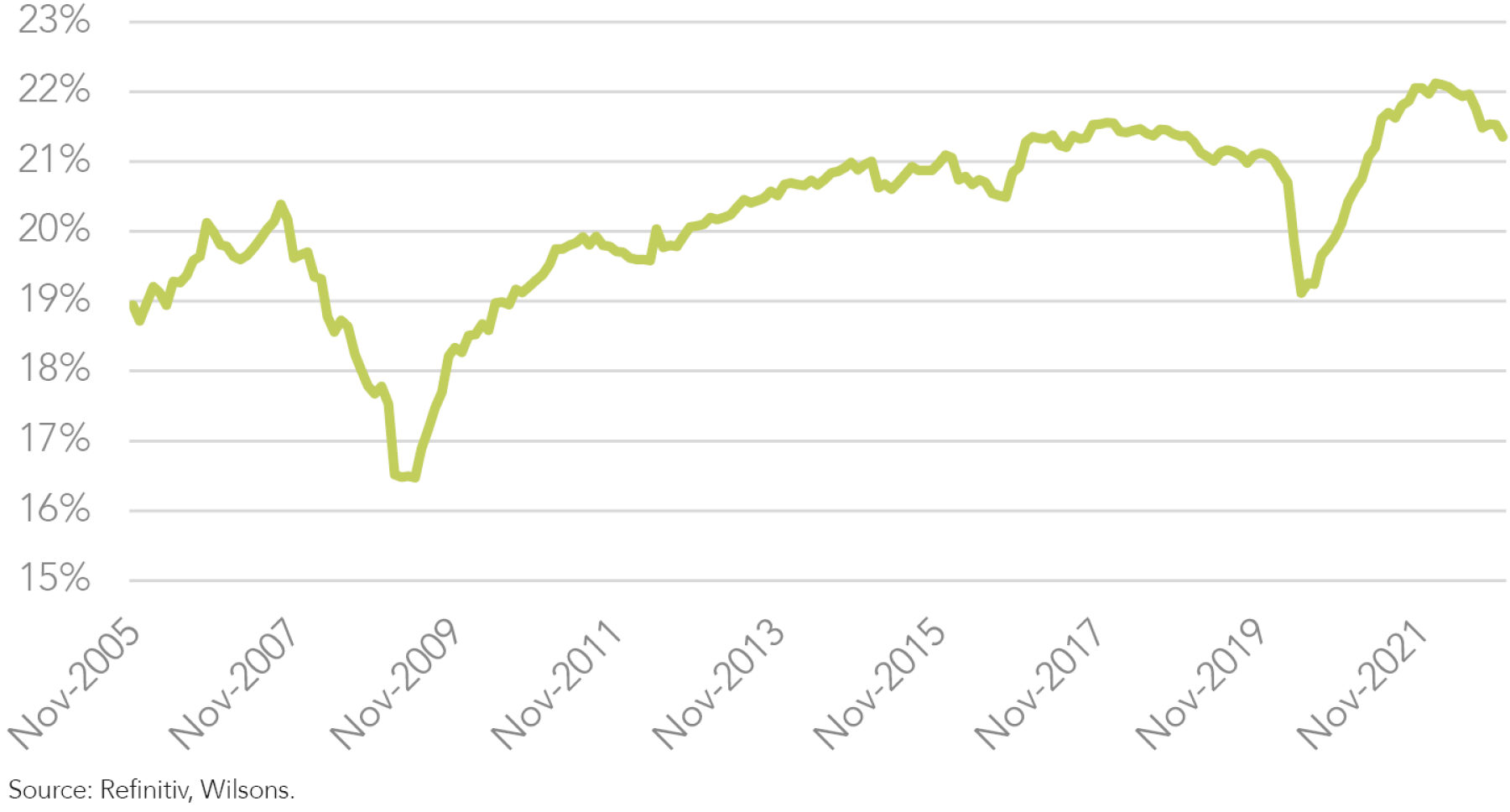
Tech Earnings Tailwinds Turn to Headwinds
After turbo-charging the US earnings cycle for a sustained period, the US market’s significant technology skew is proving to be an especially strong earnings headwind of late.
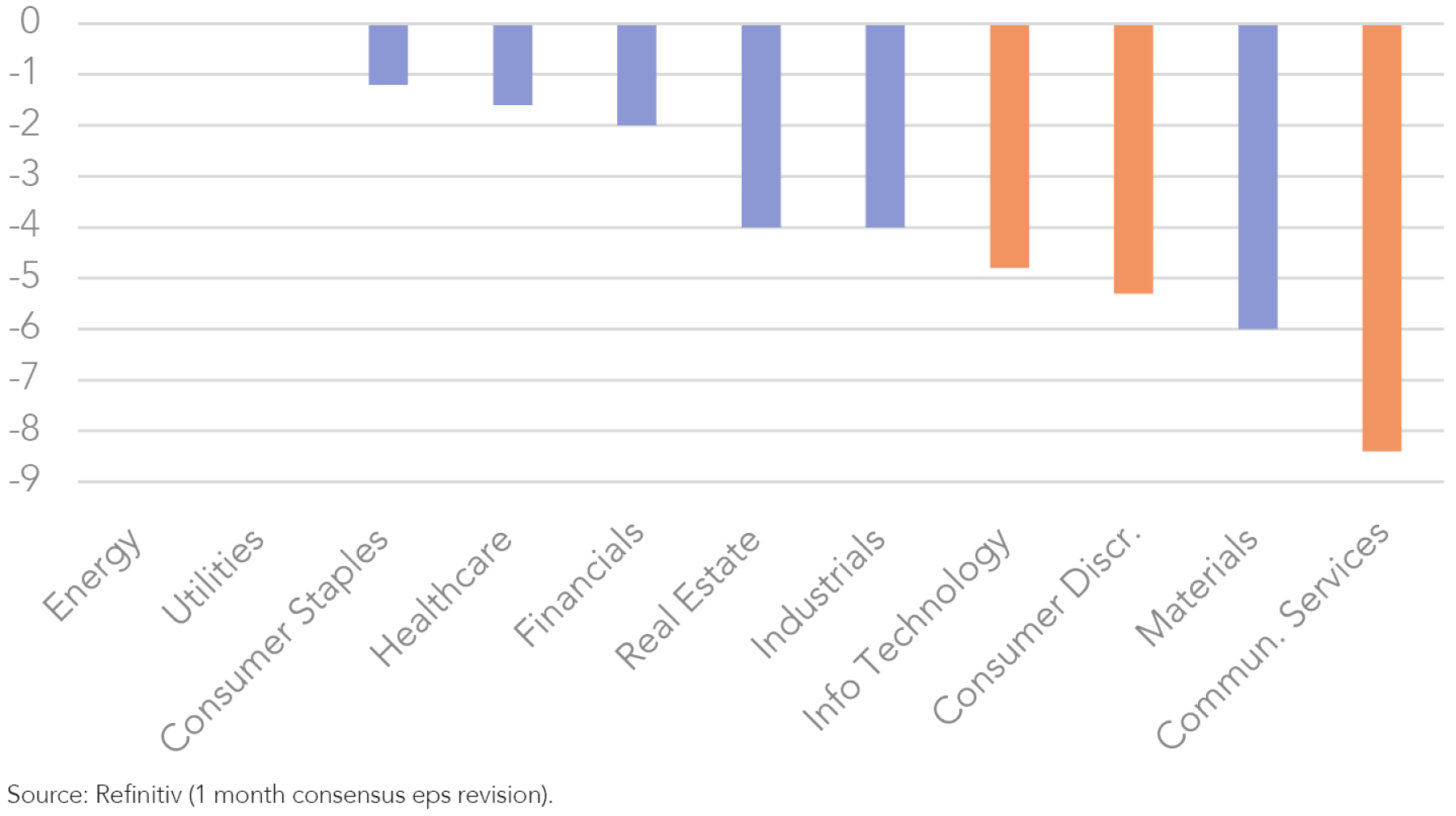
Downgrades have been seen in the IT sector (Apple, Microsoft), as well as in the tech-dominated consumer discretionary (Amazon, Tesla) and communication services sectors (Meta, Alphabet).
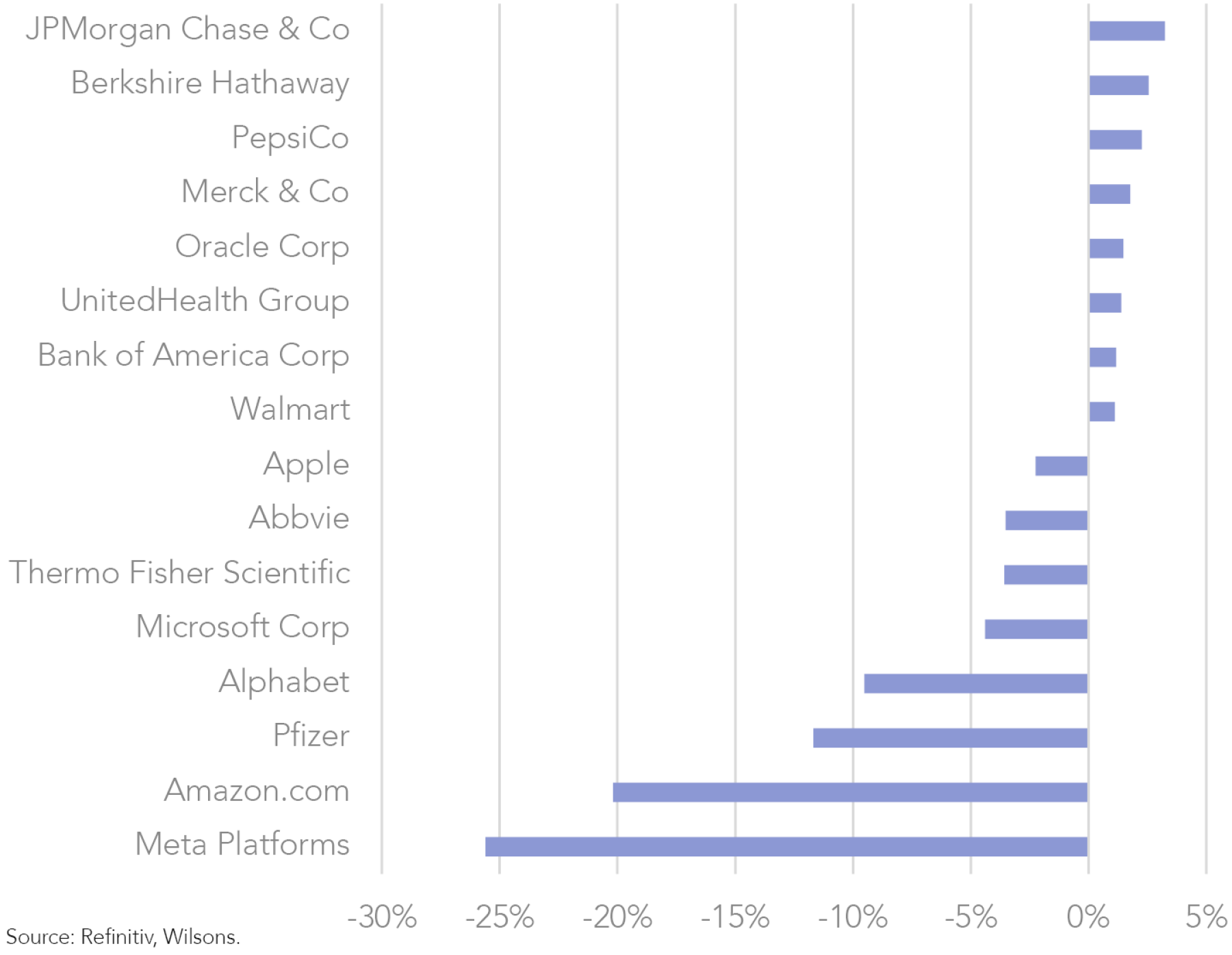
It is interesting that the mega cap tech names have seen some of the largest downgrades over the past month. Meta, Amazon and Alphabet in particular have seen big downgrades, while tech supergiants Microsoft and Apple have also had numbers crimped.
Earning pressures for tech appear to be coming from a combination of softening revenue growth, rising costs and foreign exchange (FX) headwinds.
Medium-term Tech Earnings Prospects Still Look Solid for most Mega Caps
These technology mega caps have been important in driving the long-lived US earnings upswing, which, in turn, has been pivotal to the outperformance of the US stock market over the past 10 years.
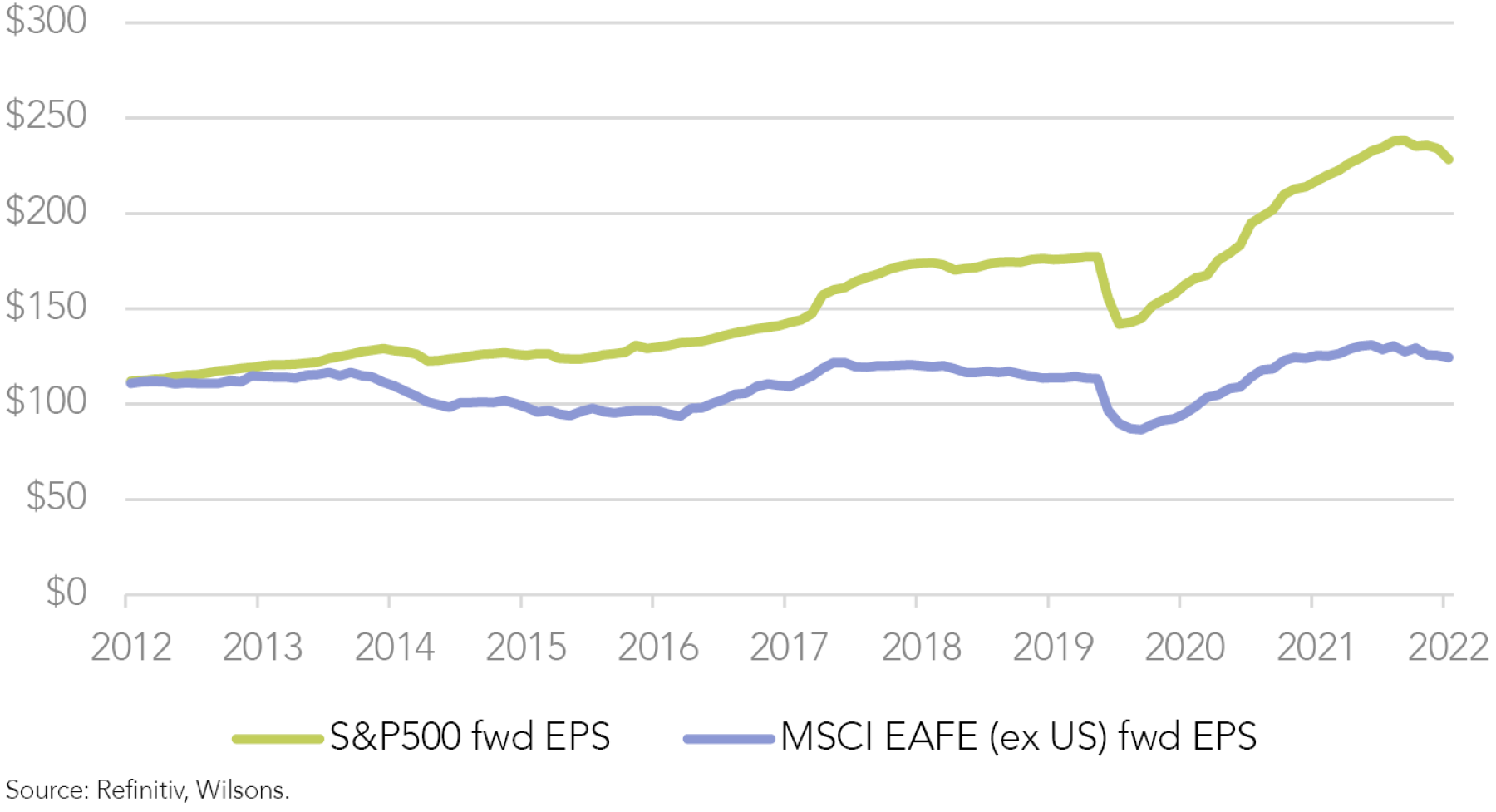

We still see a solid long-term earnings outlook for the majority of the mega cap tech names, given their dominant market positions, although near-term earnings risks are likely still tilted to the downside in our view.
With the tech giants under a degree of pressure, US earnings exceptionalism has disappeared. It may well resume over the medium-term, although right now a trifecta of earnings pressures (slower revenues, higher costs and a strong dollar) are causing headwinds for the tech sector.
Weighing up 2023 for the US Market
While the outlook for the US tech sector is especially pivotal, there are multiple factors that may influence the overall outlook for US earnings.
A key consideration is whether the US (and global) economy enters a recession next year.
Earnings per share (EPS) growth is typically significantly negative in recessionary periods (-15% based on 12-month trailing EPS).
While a US recession next year is a significant risk, we believe it is still avoidable, if narrowly. A recession in Europe looks like a higher probability.
A US downturn (even if it does prove to be a recessionary downturn) is likely to be mild by historical standards, but would likely still send the US earnings cycle into contraction mode.
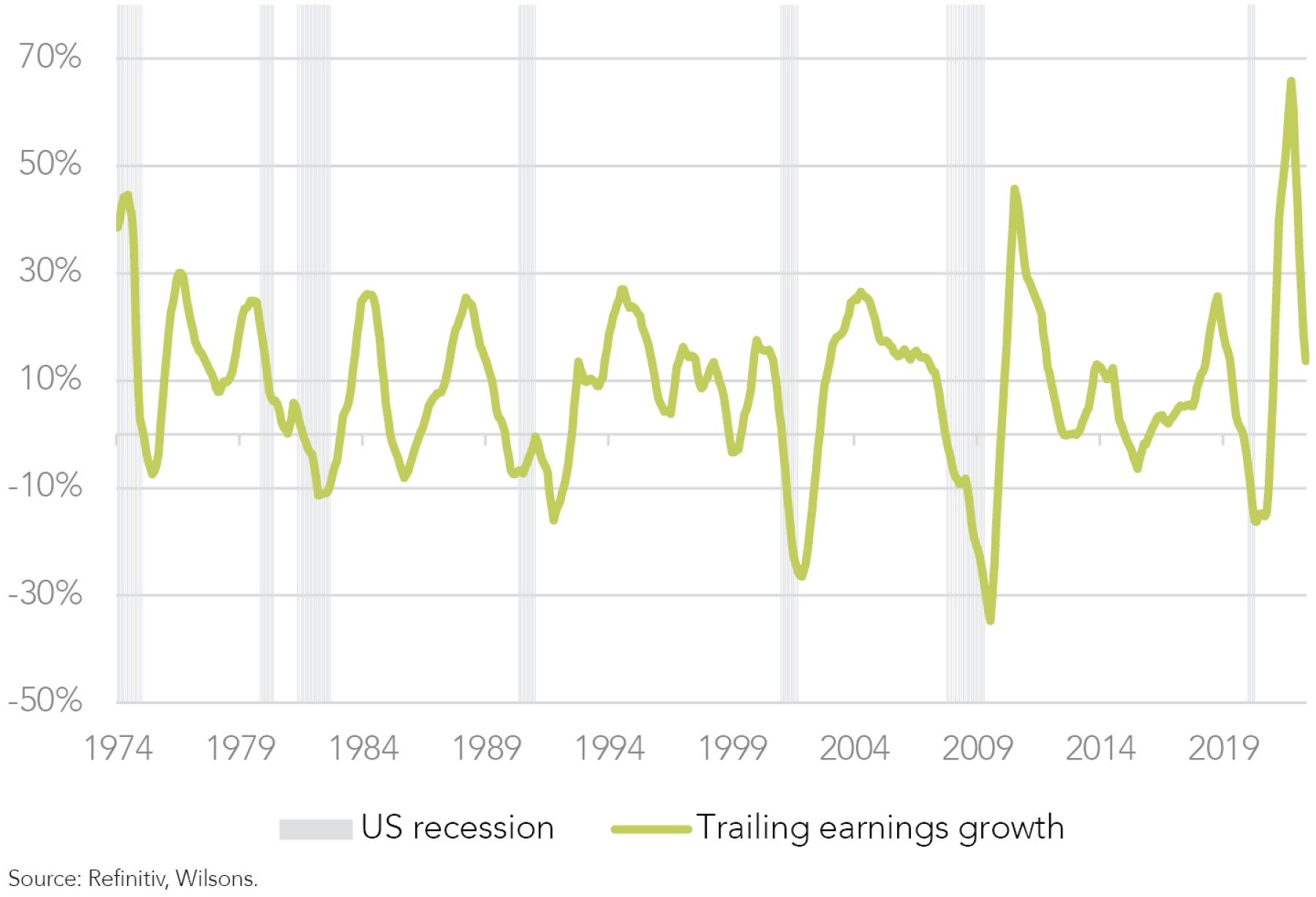
40% of S&P 500 revenues are earned outside the US. Offshore earnings are running into dual headwinds of a rising US$ alongside softening European and Asian growth. From this perspective, the path of the US$ will remain important. As discussed, US$ strength has been a noteworthy factor in crimping earnings in the third quarter. A lower US$ over the coming year would temper the drag from what are likely to be slowing demand conditions.
Rising costs have been placing pressure on margins recently. As we have discussed recently, there are signs that input cost pressures are starting to ease.
US wages have been buoyant over the past year, although there are also some tentative signs that wage growth in the US is now starting to ease. The ability of corporations to proactively manage costs is another consideration. While this is a potential positive for profitability in isolation, it may have negative implications for the economy, as jobs begin to be shed. This is the classic boom-bust dynamic of the business cycle.
In summary, with growth slowing, costs still elevated and the US$ still strong, we see zero growth as a reasonable working assumption for 2023 earnings, versus the current 6% growth consensus. With recession risk elevated, we see the risk around this central estimate as skewed to the downside.
What Are the Upside Risks as Earnings Slow?
While we see earnings risks as skewed to the downside (to our base case), upside could still come from a better-than-expected US economy, receding cost pressures and a weakening dollar. However, the prospect of an outright upgrade cycle looks quite remote at this point.
As such, it is hard to avoid the conclusion that 2023 is shaping up to be a tough year for US earnings. All things equal, this presents a headwind for US stocks.
Of course, the weakness in US equities this year is in part factoring in the 2023 slowdown. Gains from equities (our base case) are still possible in a soft earnings year, provided that (a) downgrades are relatively mild (our base case) and (b) the monetary policy (interest rate) cycle becomes more favourable. The second point is arguably the key to the performance of US stocks. A friendlier Fed (due to easing inflation) would see investors become less concerned about the quantum of potential earnings downgrades in 2023 and more focussed on a potential earnings pick-up in 2024.
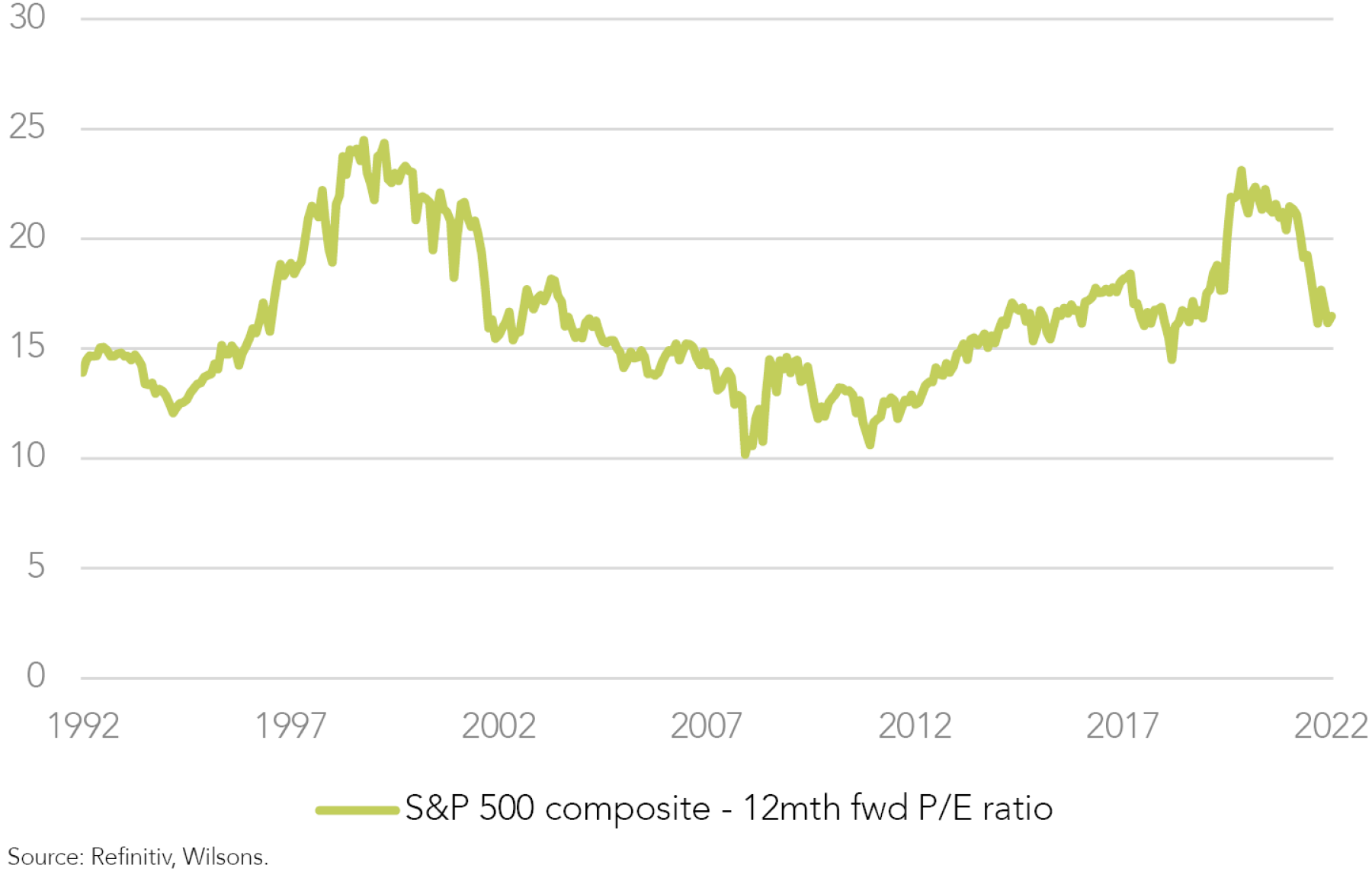

Written by
David Cassidy, Head of Investment Strategy
David is one of Australia’s leading investment strategists.
About Wilsons Advisory: Wilsons Advisory is a financial advisory firm focused on delivering strategic and investment advice for people with ambition – whether they be a private investor, corporate, fund manager or global institution. Its client-first, whole of firm approach allows Wilsons Advisory to partner with clients for the long-term and provide the wide range of financial and advisory services they may require throughout their financial future. Wilsons Advisory is staff-owned and has offices across Australia.
Disclaimer: This communication has been prepared by Wilsons Advisory and Stockbroking Limited (ACN 010 529 665; AFSL 238375) and/or Wilsons Corporate Finance Limited (ACN 057 547 323; AFSL 238383) (collectively “Wilsons Advisory”). It is being supplied to you solely for your information and no action should be taken on the basis of or in reliance on this communication. To the extent that any information prepared by Wilsons Advisory contains a financial product advice, it is general advice only and has been prepared by Wilsons Advisory without reference to your objectives, financial situation or needs. You should consider the appropriateness of the advice in light of your own objectives, financial situation and needs before following or relying on the advice. You should also obtain a copy of, and consider, any relevant disclosure document before making any decision to acquire or dispose of a financial product. Wilsons Advisory's Financial Services Guide is available at wilsonsadvisory.com.au/disclosures.
All investments carry risk. Different investment strategies can carry different levels of risk, depending on the assets that make up that strategy. The value of investments and the level of returns will vary. Future returns may differ from past returns and past performance is not a reliable guide to future performance. On that basis, any advice should not be relied on to make any investment decisions without first consulting with your financial adviser. If you do not currently have an adviser, please contact us and we would be happy to connect you with a Wilsons Advisory representative.
To the extent that any specific documents or products are referred to, please also ensure that you obtain the relevant disclosure documents such as Product Disclosure Statement(s), Prospectus(es) and Investment Program(s) before considering any related investments.
Wilsons Advisory and their associates may have received and may continue to receive fees from any company or companies referred to in this communication (the “Companies”) in relation to corporate advisory, underwriting or other professional investment services. Please see relevant Wilsons Advisory disclosures at www.wilsonsadvisory.com.au/disclosures.

